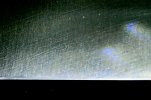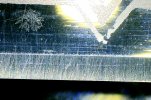Wowbagger
Gold Member
- Joined
- Sep 20, 2015
- Messages
- 7,841
I'm not arguing and will try some REAL slurry on some medium and finer stones for larger surfacesThe cutting action of loose abrasives is totally different than fixed and works much better over a larger surface
but
my Norton 220 grey water stone , which says in their literature is silicon carbide , is VERY friable . . . I mean we are talking stupid amounts of loose abrasive in no time with no effort to make slurry .
I have NEVER been able to make it actually cut material away at a decent rate on alloys it should be working well with (VG 10 , XHP , etc ) , even to just smooth out the side of a knife I have taken to the 36 grit belt sander , let alone reprofile etc a couple degrees shallower angle.
I ALWAYS reach for my Shapton Pro White 220 which cuts circles around the Norton slurry master.
I love the other three Nortons and get along just fine with them.
The Norton 220 . . . only good for a door stop .
I'm lost
EDIT TO CLARIFY :
The Shapton 220 I mentioned in a post above is for the Edge Pro and is 6 in x 1 in and I would put "Shapton" in parentheses (and should be Sharpton GLASS ) because it is so much different from my full size Shapton Pro 220 bench stone which is around 10 in x 3 in ; the former gets soft fast and the latter is much less friable and cuts super well and doesn't dish hardly at all.
Last edited:




